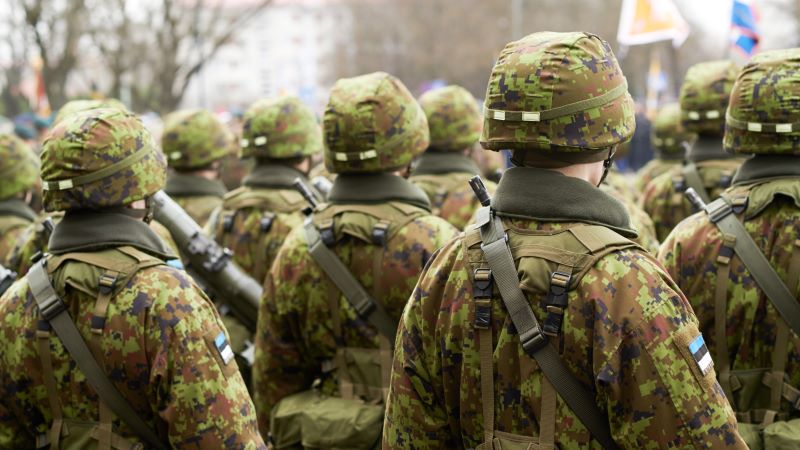Since its accession to the Northern Atlantic Treaty Organization (Nato) in March of 2004, Estonia has played an outsized role in the maintenance of Nato’s defensive posture and deterrence operations in the Baltic states. A history of conflict and occupation by the Soviet Union has left the populace, and successive governments, extremely wary of a belligerent and expansionist Russian Federation, having on multiple occasions pressed its Nato allies to act more decisively against this threat. Yet despite repeated pleas, the concerns of Estonia and its Baltic allies were largely downplayed by Western officials, with limited response to nationwide Distributed Denial-of-Service (DDoS) attacks by the Russian security services in 2007, which crippled Estonia’s digital networks for weeks. After calling for Georgia and Ukraine to be granted Nato membership following the Russian invasion of Georgia in 2008, the Estonian government has repeatedly requested the deployment of additional Nato forces to the region, with the establishment of an Estonian Enhanced Forward Presence (eFP) Nato battlegroup in 2017 and multiple in-country joint exercises reinforcing Estonia’s strategic deterrence capabilities in recent years.
Yet despite this recent surge in Nato assistance, the Estonian government understood that it would need to invest significantly in shoring-up its domestic defence capabilities and pursue bilateral procurement initiatives with allies on an individual basis to stand any chance of competing in an armed conflict with the Russian Federation. Consequently, the Estonian Ministry of Defence (MoD) has pursued an impressive number of modernisation programs in recent years, seeking to enhance its capabilities across the air, land, and maritime domains simultaneously, and thus providing a unique case study into effective military modernisation on a limited budget. Indeed, despite announcing a €103 million ($114 million) increase to their annual defence budget in February 2022, the annual defence budget for FY2021 only amounted to €645 million ($715 million), which is dwarfed by Russia’s $62 billion expenditure for that same year. Consequently, the Estonian MoD has engaged in several joint ventures with allied states and organisations, leveraging domestic expertise in IoT and unmanned systems technologies, to simultaneously enhance military capabilities and opportunities for the defence industry.
Two prime examples of this trend can be seen in the recent commercial activities of Estonian defence companies Cybernetica and MilRem Robotics. Cybernetica was granted an award in December 2020, commending the firm for its contributions to the European Cyber Situational Awareness (ECYSAP) platform, a joint initiative under the European Defence Industrial Development Program (EDIDP), which conducted research into sensor integration and situational awareness visualisation for a European cybersecurity platform.
MilRem Robotics, an established manufacturer of unmanned ground vehicles (UGVs) which currently supplies platforms to Australia, France, Germany, Norway, the UK, and the US, amongst others, signed a joint procurement contract the same year with the Royal Netherlands Army and the Estonian Defence Forces for the supply of several THeMIS multi-role UGVs, following successful operational testing alongside the French Army. This push to foster industrial cooperation and generate funding from foreign partners has been further assisted by the Defence Estonia Cluster, a collection of 14 defence firms designed to enhance cooperation between Estonian companies, R&D institutions, and clients.
However, as Estonia’s defence industrial base remains limited, the MoD has had to pursue several large-scale modernisation programs in a highly cost-effective manner. This has led to procurement agreements with typically smaller foreign defence companies, as seen in 2019 when the MoD signed a €75 million ($83 million) contract with US-based firearms manufacturer Lewis Machine & Tool Co. (LMT) for 16,000 MARS-L rifles to replace their inventory of Cold War-era Ak-4 and Galil rifles. In the naval domain, the EDF is set to acquire an unspecified amount of ‘smart’ naval mines from a Finnish manufacturer, most likely the MM30 Turso mines manufactured by DA-Group, as well as the newly developed Blue Spear 5G Surface-to-Surface Missiles (SSM) from Proteus Advanced Systems, a joint venture between Israel Aerospace Industries and ST Engineering Land Systems.
As for the air domain, the Estonian government announced that it would seek to purchase advanced air and missile defence systems in May 2022, emulating Lithuania’s recent purchase of the Norwegian Advanced Surface to Air Missile Systems (NASAMS). Though no specific system has been selected as of yet, the Estonian MoD indicated that it would seek to cooperate with the US military to ensure interoperability with Nato’s wider air defence network, and estimated that the total cost could amount to €350 million ($388 million), making it the largest single defence purchase in Estonian history.
In summary, the deterioration of European geopolitical security has proven to be the catalyst for the expansion of Estonia’s role in supporting both EU and Nato defence initiatives, with many Western nations now benefitting from increased cooperation with a willing, able, and dedicated partner in the European defence market. If the Estonian government continues its pursuit of joint R&D ventures and promotion domestic defence expertise, it seems likely that the Estonian defence industry will see positive growth and outcomes in the coming years.
More in-depth information on the Estonian defence market can be found at globaldata.com





